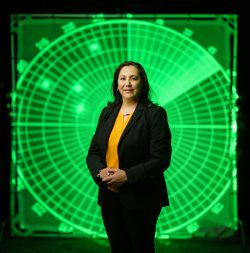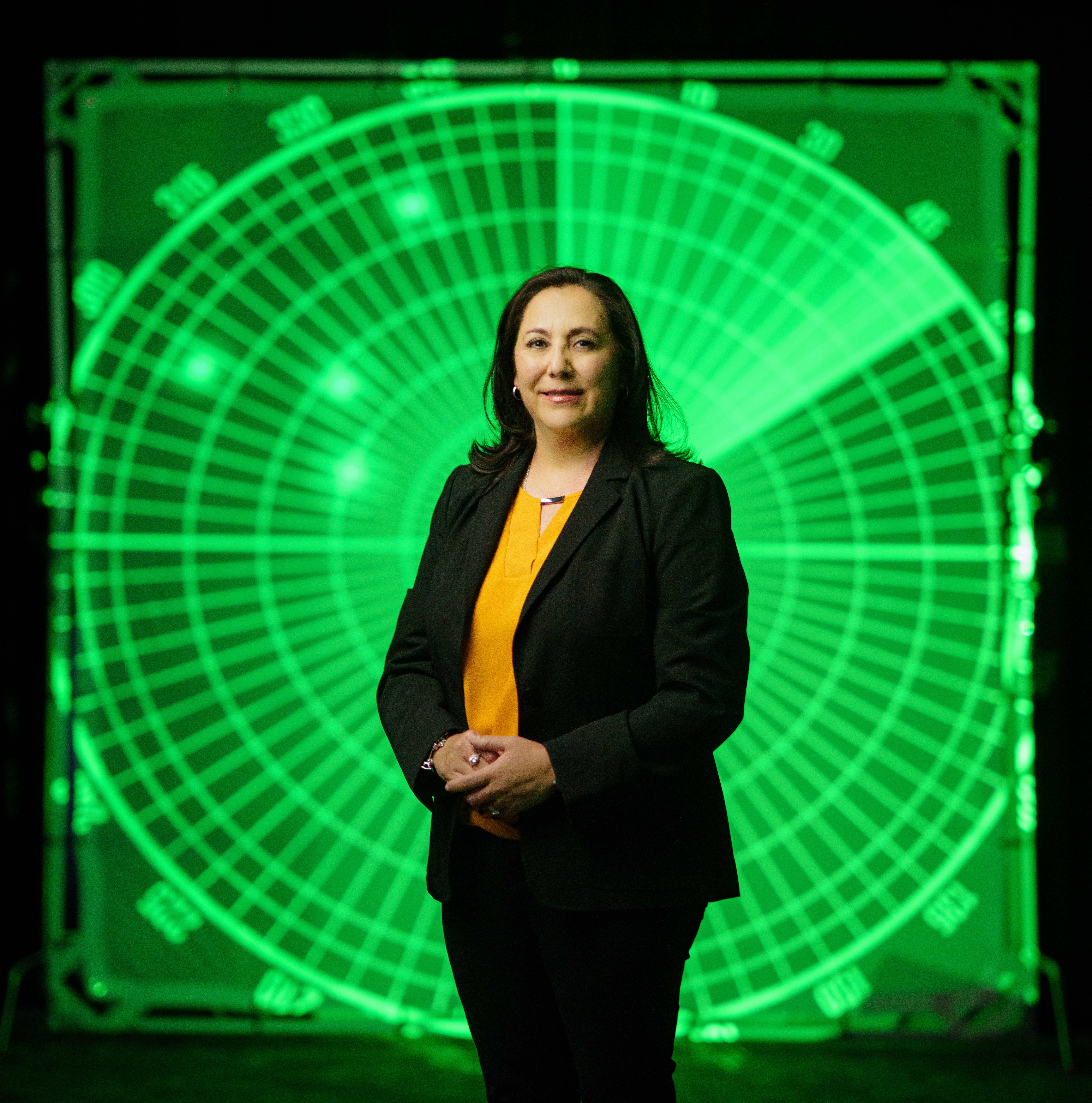ALBUQUERQUE, N.M. — In a whirling geopolitical landscape of new nuclear weapons, hypersonic weapons, drones and satellites, the U.S. is hustling to test new kinds of radars aimed at detecting evolving threats.
Many of these tests take place in a simulated research environment created at Sandia National Laboratories. Dubbed RAMSES by its developers, the advanced modeling and simulation software is hastening the development of next-generation radars.

Sandia National Laboratories senior manager Elaine Martinez has worked on RAMSES (Radar Analysis, Modeling, Simulation and Emulation Suite) which comprises dozens of test scenarios for rapid prototyping. (Photo by Craig Fritz) Click on the thumbnail for a high-resolution image.
“We’re hearing from the combatant commands that they need multimission capabilities, and RAMSES is able to bring those software simulations to the customer,” Sandia senior manager Elaine Martinez said.
RAMSES — short for Radar Analysis, Modeling, Simulation and Emulation Suite — comprises dozens of test scenarios for rapid radar prototyping for a vast number of applications, including advanced target recognition and target tracking. It has become Sandia’s go-to tool for helping government agencies reinvent radar to reaffirm American supremacy in communications, reconnaissance and electronic warfare.
“We’re determining the feasibility of new radar capabilities to solve the nation’s most urgent and complex security needs,” Martinez said. “RAMSES allows us to rapidly prototype and find optimal designs before we build anything, saving us a considerable amount of time and resources.”
The software is already proving its value to the taxpayer.
“We’re able to simulate what happens before the equipment gets flown,” she said. “It’s a huge cost savings.”
A common design tool for a rapidly changing technology
Recent advances in computing are fueling some of the biggest changes to military-grade radars since the tech was invented nearly 90 years ago. A lot of these changes are happening as engineers increasingly swap analog for digital parts.
A high-resolution image from synthetic aperture radar can require collecting a tremendous amount of data — up to 100 gigabytes, said radar expert Aaron Hallquist. Historically, that meant analog components had to preprocess information before it could be handled digitally. But now digital components can work with these heavy data streams.
The digital switchover brings an opportunity to use radar signals in new ways, such as changing characteristics of the radar signal on the fly to make it harder to jam, or quickly downloading changes to system configurations for different missions. These are difficult feats with analog tech.
“The things people are trying to do with radar — different domains, different applications, different algorithms — these things have been theorized about for a long time,” Hallquist said. “Now people are actually exploring and trying to design them.
“That kind of necessitates the existence of this common tool that can meet the simulation and design needs for all those programs,” he said.
Martinez said, “Government partners come to us and say, ‘We want to provide our warfighters more options. We want to give them more flexibility. We want to give them greater ability to execute an increasingly wide range of missions.’ In RAMSES, we learn the types of configurations and designs that exactly allow us to meet their goals.”
Simulation software also has benefited from advances in computing.
“We can actually simulate high-fidelity radar returns now, where we wouldn’t have been able to do that 10 years ago, at least in any reasonable amount of time,” Hallquist said.
Sandia National Laboratories is a multimission laboratory operated by National Technology and Engineering Solutions of Sandia LLC, a wholly owned subsidiary of Honeywell International Inc., for the U.S. Department of Energy’s National Nuclear Security Administration. Sandia Labs has major research and development responsibilities in nuclear deterrence, global security, defense, energy technologies and economic competitiveness, with main facilities in Albuquerque, New Mexico, and Livermore, California.
Sandia news media contact: Troy Rummler, trummle@sandia.gov, 505-249-3632
